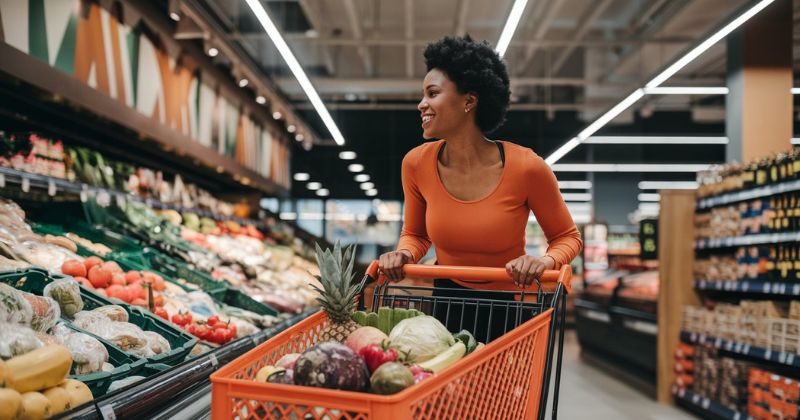
South Africa’s Minister of Finance has officially retracted the previously proposed 0.5 percentage point increase to the Value-Added Tax (VAT) rate. This decision prompts important considerations regarding the prices of essential goods and how it may affect the everyday consumer. The announcement comes at a time when households are already grappling with high food inflation, elevated fuel prices, and mounting financial pressures.
Key Takeaways
- VAT Hike Reversed to Protect Consumers: South Africa’s Finance Minister has formally withdrawn the proposed VAT increase, maintaining the rate at 15% to help shield consumers from further financial strain amidst already high living costs.
- Basic Essentials Remain Stable: Zero-rated basic foodstuffs and essential items, such as bread, maize meal, and fuel, will continue to be exempt from VAT, ensuring that the prices of these critical goods remain stable for households across the country.
- Revenue Shortfall Creates Fiscal Pressure: The decision to freeze VAT will leave a R75 billion gap in government revenue over the medium term, likely forcing Treasury to explore alternative fiscal strategies to maintain economic stability.
About Arcadia Finance
Need a loan without the stress? Arcadia Finance makes it easy. No application fees, a choice of 19 reliable lenders, and full compliance with the South African National Credit Regulator. Simple, secure, and built around your financial goals.
Reversal of VAT Hike Brings Relief to South Africans
In a development welcomed by many South Africans concerned about the rising cost of living, Finance Minister Enoch Godongwana has announced the introduction of corrective measures aimed at reversing the earlier proposal to increase VAT. Initially, the plan had been to raise the VAT rate from the current 15% to 15.5%, with a further adjustment scheduled to bring it to 16% in the following year. These proposed increases had been formally introduced in the 2025 Budget and were subsequently approved within the broader fiscal framework outlined by the National Treasury. The original plan had triggered widespread anxiety among consumer advocacy groups, unions, and financial analysts, all warning of the devastating ripple effects it could have had on disposable incomes and food security.
Background to the VAT Proposal and Its Withdrawal
To provide context, the February Budget Speech had initially been postponed, during which time the National Treasury had floated an even steeper proposal for a once-off 2 percentage point VAT increase. However, in the face of mounting pressure from opposition political parties and the intervention of a court interdict, the government ultimately decided to abandon these plans. Through a media statement quietly published on its official website at midnight on Wednesday, the National Treasury confirmed its decision to maintain the VAT rate at the current 15%. Sources close to the discussions revealed that internal divisions within the ruling party also contributed to the decision, with senior figures expressing concern about the political fallout ahead of the upcoming elections.
While the government debates VAT freezes on essentials, consumers are already feeling the burn at the tills. To fully grasp how deeply this tax change cuts into daily life, explore The True Impact of the VAT Hike Is Greater Than Expected, a breakdown that shows the ripple effects beyond just groceries.

Impact on the Prices of Basic Goods
The central question arising from this announcement is what practical effect the decision will have on the cost of basic goods for the average South African shopper. For many consumers, particularly those who rely heavily on essential commodities, the implications are significant. At a time when many households are already scaling back on non-essential purchases and prioritising survival basics, maintaining current VAT levels has been described as a critical lifeline.
VAT-Exempt Goods Remain Unaffected
Firstly, it is critical to understand that a considerable number of essential food items are already classified as zero-rated for VAT purposes. This means that these goods are not subject to VAT at all, irrespective of whether the general VAT rate increases or remains unchanged. Presently, the basket of basic zero-rated foodstuffs comprises 19 items, including brown bread, maize meal, samp, mealie rice, dried mealies, dried beans, lentils, pilchards or sardinella in tins, milk powder, dairy powder blend, rice, a range of vegetables, fruits, vegetable oil, milk, cultured milk, brown wheaten meal, eggs, and edible legumes and pulses derived from leguminous plants.
During the most recent Budget announcements, this list was further expanded to incorporate edible offal, specific cuts of meat, dairy liquid blends, and canned or tinned vegetables. Beyond food, several other essentials are also zero-rated, including petrol, diesel, illuminating kerosene, and sanitary towels. Given their exemption from VAT, the proposed increase would not have led to higher prices for these items. Similarly, while the withdrawal of the VAT increase does not reduce their prices, it crucially maintains price stability for these vital staples. Economists have noted that retaining the existing VAT exemptions is particularly important for preventing a surge in hunger rates and for shielding vulnerable communities from further economic hardship.

Non-Zero-Rated Essentials Receive a Price Reprieve
However, the true impact of the government’s decision is seen in the pricing of goods and services that are subject to VAT. Items such as cleaning products, personal toiletries including toothpaste and shampoo, over-the-counter medications, packaged snacks, breakfast cereals, soft drinks, and both prepaid and postpaid electricity services, would all have experienced noticeable price increases had the VAT rate been raised.
An increase from 15% to 15.5% might have resulted in a price rise of anything from a few cents to several rands per item, depending on the nature and quantity of the purchase. Although individually such increases might appear minor, when considered over the course of a month, particularly across multiple purchases, the cumulative effect could have placed a significant additional burden on household budgets. This would have been especially pronounced among lower-income families, for whom even small increases in essential goods can substantially impact overall affordability.
Consumer watchdogs have warned that if VAT had been raised, the monthly grocery bill for a modest family could have risen by R150 to R300, a devastating blow for those already living on the financial edge.
According to National Treasury’s communication, by foregoing the planned VAT hike, the government anticipates a shortfall of approximately R75 billion in projected revenue over the medium term. This gap will likely necessitate the introduction of alternative fiscal measures to balance public finances in the coming years. Analysts suggest that the government may now look towards measures such as targeted excise tax hikes, tighter spending cuts, or enhanced revenue collection from existing streams to offset the lost VAT income.
Conclusion
The withdrawal of the proposed VAT increase offers much-needed breathing space for South African households grappling with persistent cost-of-living pressures. By maintaining the VAT rate at 15%, the government has helped avert immediate price hikes on a wide range of essential goods and services, preserving affordability for millions. However, the move also presents a significant fiscal challenge, as the anticipated revenue shortfall may compel the state to seek new avenues for funding, potentially through targeted taxes or spending restraint. In a fragile economic climate marked by rising unemployment and sluggish growth, the decision underscores the difficult balancing act facing policymakers: protecting consumers today while safeguarding the nation’s financial future tomorrow.
Fast, uncomplicated, and trustworthy loan comparisons
At Arcadia Finance, you can compare loan offers from multiple lenders with no obligation and free of charge. Get a clear overview of your options and choose the best deal for you.
Fill out our form today to easily compare interest rates from 19 banks and find the right loan for you.



